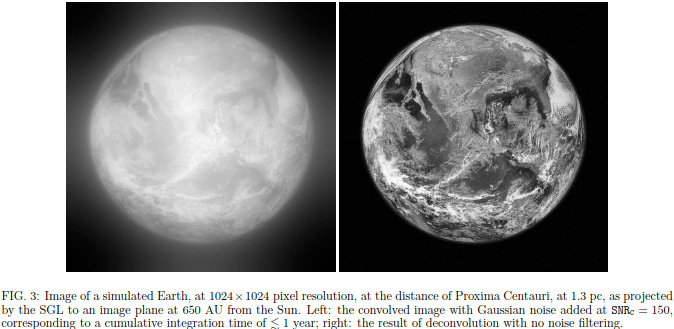In the last several years, we worked out most of the details about the Solar Gravitational Lens. How it forms images. How its optical qualities are affected by the inherent spherical aberration of a gravitational lens. How the images are further blurred by deviations of the lens from perfect spherical symmetry. How the solar corona contributes huge amounts of noise and how it can be controlled when the image is reconstructed. How the observing spacecraft would need to be navigated in order to maintain precise positions within the image projected by the SGL.
But one problem remained unaddressed: The target itself. Specifically, the fact that the target planet that we might be observing is not standing still. If it is like the Earth, it spins around its axis once every so many hours. And as it orbits its host star, its illumination changes as a result.
In other words, this is not what we are up against, much as we’d prefer the exoplanet to play nice and remain motionless and fully illuminated at all times.

Rather, what we are against is this:
Imaging such a moving target is hard. Integration times must be short in order to avoid motion blur. And image reconstruction must take into account how specific surface features are mapped onto the image plane. An image plane that, as we recall, we sample one “pixel” at a time, as the projected image of the exoplanet is several kilometers wide. It is traversed by the observing spacecraft that, looking back at the Sun, measures the brightness of the Einstein ring surrounding the Sun, and reconstructs the image from this information.
This is a hard problem. I think it is doable, but this may be the toughest challenge yet.
Oh, and did I mention that (not shown in the simulation) the exoplanet may also have varying cloud cover? Not to mention that, unlike this visual simulation, a real exoplanet may not be a Lambertian reflector, but rather, different parts (oceans vs. continents, mountain ranges vs. plains, deserts vs. forests) may have very different optical properties, varying values of specularity or even more complex optical behavior?